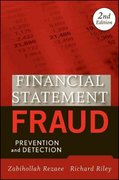Question
1.Which of the following are overstated as a result of the failure to record an accrued liability? Net income, current ratio and rate of return
1.Which of the following are overstated as a result of the failure to record an accrued liability?
Net income, current ratio and rate of return on debt.
Current ratio, acid-test ratio and rate of return on debt.
Net income, acid-test ratio and rate of return on debt.
Net income, current ratio and acid test ratio.
None of the above.
2. A company has a loss that can be estimated, but the chance of it occurring is remote.What reporting does International Financial Reporting Standards require regarding this loss?
It should not be accrued or reported in the notes to the financial statements.
It should be accrued and reported on the financial statements and reported in the notes to the financial statements.
It should be accrued and reported on the financial statements.
It should be reported in the notes to the financial statements.
None of the above.
- A company has a probable contingent gain that can be reasonably estimated.What reporting does International Financial Reporting Standards require regarding this contingent gain?
It should be ignored until the actual gain materializes.
It should either be recorded on the financial statements or reported in the notes to the financial statements.
It should be accrued and reported in the financial statements.
It should be reported in the notes to the financial statements.
None of the above.
1.Return on assets (ROA) :
Will increase as long as operating profit margin increases.
Will decrease as long as asset turnover decreases.
Is not useful in helping analysts isolate achieved cost reductions.
Is useful in helping analysts isolate efficiency gains in asset management.
None of the above.
1.Increasing the average age of property, plant, and equipment on hand:
Increases the return on assets and increases the return on common equity.
Increases the return on assets and has no effect on the return on common equity.
Decreases the return on assets and decreases the return on common equity.
Has no effect on either the return on assets or the return on common equity.
None of the above.
Step by Step Solution
There are 3 Steps involved in it
Step: 1

Get Instant Access to Expert-Tailored Solutions
See step-by-step solutions with expert insights and AI powered tools for academic success
Step: 2

Step: 3

Ace Your Homework with AI
Get the answers you need in no time with our AI-driven, step-by-step assistance
Get Started


